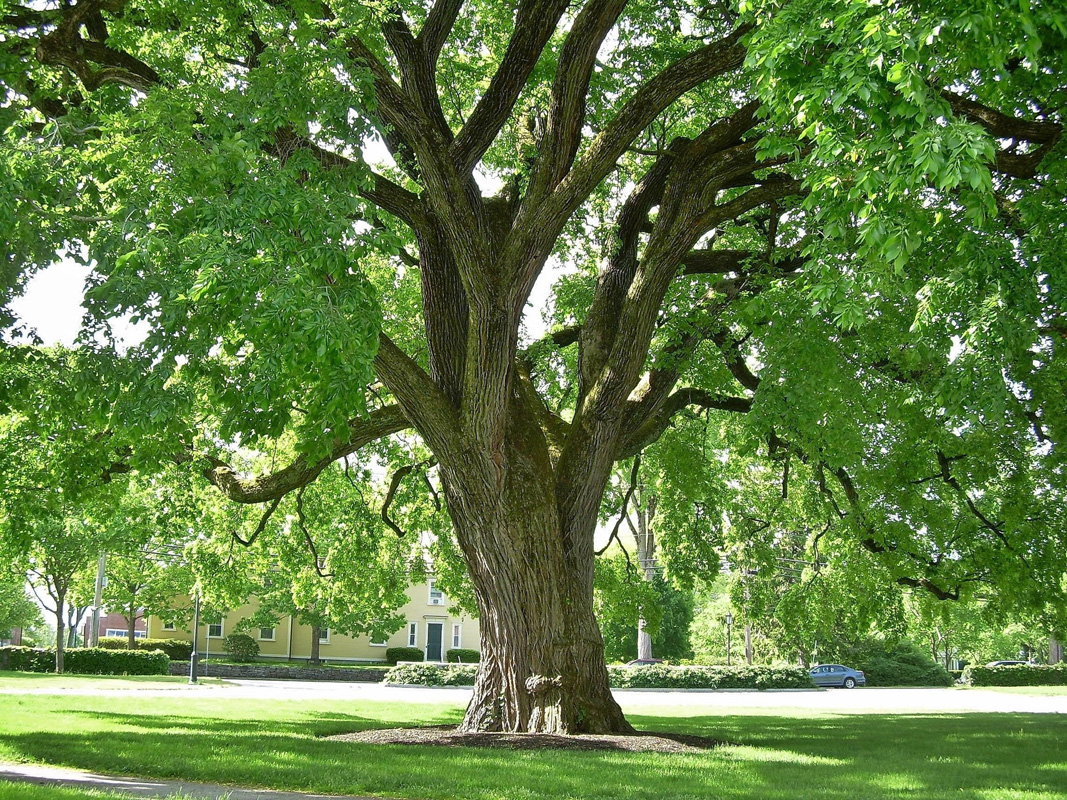Planting trees is an incredibly rewarding activity that benefits both the environment and the community. Whether you’re a novice or an experienced gardener, understanding how to be a tree planter is essential to ensure the longevity and health of your new tree. This comprehensive guide is designed to walk you through the entire process, from understanding your local climate and soil conditions to selecting the right tree, determining the best time for planting, and more. By following these practiced techniques and tips, you can contribute to a greener environment and enjoy the beauty and shade that trees provide.
Understanding Your Local Climate and Soil Conditions

The first step in learning tree planting is to understand your local climate and soil conditions. Trees thrive in environments that match their natural habitats. Therefore, it’s crucial to assess factors such as temperature, humidity, and seasonal changes in your area. Local tree removals can provide insight into which trees might face difficulties in your locale, making it easier to choose the right tree species to plant.
Additionally, consider the average rainfall and sunlight your area receives throughout the year. These factors can significantly impact tree growth and health. Analyzing soil conditions is equally important. Different trees require different soil types, levels of drainage, and pH balances. Conduct a soil test to determine its composition and suitability for various tree species. You may need to amend the soil or select a tree that can naturally thrive in the existing conditions. Consulting local tree contractors can help in gaining a more accurate understanding of your soil and climate.
Learning how to be a tree planter involves continuous observation and adaptation. Keeping a close eye on how trees in your area perform can provide valuable lessons and prevent common mistakes. A combination of local knowledge and professional advice from sources such as local arborists will significantly improve your chances of success. Staying informed about seasonal trends and adjustments can further enhance your tree-planting efforts and long-term care strategies.
Selecting the Right Tree for Your Space
The next step in the journey of tree planting is selecting the right tree for your space. Different trees have different space requirements, root systems, and growth patterns. Research the mature size of the tree species to ensure it won’t outgrow the space available or interfere with structures, sidewalks, or utilities. A tree removal services provider can offer guidance on past issues caused by improper tree selection.
Consider the purpose of planting the tree. Are you looking for shade, fruit, flowers, or simply aesthetic value? Different trees serve different functions, and matching your needs with the appropriate tree type is crucial. Consulting with a tree service company can provide recommendations on the best species for your specific goals.
Always opt for healthy specimens from reputable nurseries to avoid future problems. Inspect the tree for signs of disease or poor health before purchasing. Learning how to be a tree planter means recognizing that a healthy start increases the tree’s chances of thriving in the long term. Take professional advice from local tree trimmers on the best practices for initial care.
Determining the Best Time for Planting
Determining the optimal planting time is a key aspect of understanding tree planting. While autumn and spring are generally considered the best times to plant trees, the specific timing may vary depending on the tree species and local climate conditions. Planting at the right time allows the tree to establish roots before facing extreme weather. Autumn offers cooler temperatures and ample moisture, while spring provides a full growing season ahead of summer heat.
Consulting a tree trimming company can provide valuable insights into the best planting times for different species. They can also offer tips on how to protect new plantings from harsh weather conditions, such as mulching to retain moisture and providing shade during intense sun. Proper timing can significantly reduce the stress on the tree, ensuring better growth and less risk of disease or pest infestation.
In some cases, emergencies or specific objectives might necessitate planting trees outside the ideal window. In such situations, professional advice from local tree contractors can guide you on how to mitigate risks and support the tree during its critical early growth period. They may suggest additional care techniques like special watering schedules or temporary shelters to help your tree establish itself. This adaptability is crucial in mastering how to be a tree planter.
Preparing the Planting Site

Properly preparing the planting site is crucial for the tree’s health and growth. Start by clearing the site of any grass, weeds, or debris that could compete with the tree for water and nutrients. This initial preparation can mitigate the need for future shrub removal and maintenance, ensuring a cleaner, healthier start for your tree.
Dig a hole that is two to three times the width of the root ball but not deeper than the container or root system. This wider hole allows roots to spread and establish more easily. Enlisting local tree contractors can provide additional expertise in preparing the site according to best practices.
Understanding how to be a tree planter includes ensuring proper placement and orientation of the tree. Position the tree in the hole with its roots spread out evenly. Backfill the hole with soil, gently tamping it down to remove air pockets. Water the site thoroughly to help settle the soil around the roots and provide necessary hydration.
Proper Tree Planting Techniques
Mastering proper tree planting techniques is a vital element of knowing tree planting. First, remove the tree from its container carefully to avoid damaging the roots. If the tree is balled and burlapped, cut away the burlap and remove any wires or ropes. This ensures the roots are free to grow without constraints.
Place the tree in the prepared hole, making sure it is straight and centered. The root flare, where the roots meet the trunk, should be at or slightly above ground level. Avoid planting the tree too deep, as this can cause root rot and other health issues. A tree service company can demonstrate the correct planting depth and technique.
After positioning the tree, fill the hole halfway with soil, then water it to help eliminate air pockets. Continue filling the hole with soil, then water again thoroughly. Learning how to be a tree planter also involves mulching around the base of the tree to retain moisture and regulate soil temperature. Local arborists can offer additional tips for successful planting.
Mulching for Tree Health
Mulching is an essential practice in tree planting that helps maintain soil moisture, regulate temperature, and reduce weed growth. Spread a 2-4 inch layer of mulch around the base of the tree, extending it out to the tree’s drip line. Keep the mulch a few inches away from the trunk to prevent rot and pests. This practice is fundamental in learning tree planting successfully.
Choosing the right type of mulch can also impact the tree’s health. Organic mulches like wood chips, bark, or compost are generally effective at providing nutrients as they decompose. Local arborists can guide you in selecting the best mulch type for your specific tree species and soil conditions.
Regularly inspect and replenish the mulch as necessary, especially after heavy rains or during drought conditions. Keeping the mulch layer consistent and free of weeds will support the tree’s growth and health. This attention to detail is part of mastering how to be a tree planter and ensuring your young tree thrives.
Watering Your New Tree

Adequate watering is crucial for the establishment and growth of a newly planted tree. In the initial weeks, water the tree several times a week, ensuring the soil remains consistently moist but not waterlogged. As the tree establishes its roots, gradually reduce the frequency while increasing the amount of water. This practice is vital in understanding tree planting.
The specific watering needs can vary based on tree species, soil type, and climate. A general guideline is to provide about 10 gallons of water per inch of trunk diameter for each watering session. If you’re uncertain, consulting a professional for advice similar to shrub removal experts can ensure you meet your tree’s hydration needs accurately.
Mulching around the tree can help conserve water by reducing evaporation and keeping the soil moist. Periodically check the moisture level of the soil to adjust your watering schedule as needed. Remember, overwatering can be just as harmful as underwatering. Mastering how to be a tree planter means finding the right balance to support your tree’s health and growth.
Fertilizing for Growth
Fertilizing your tree can provide essential nutrients that promote healthy growth and development. It’s important to use the right type of fertilizer based on your soil test results and tree species. Generally, a balanced, slow-release fertilizer works well for most trees. Understanding how to be a tree planter includes knowing the specific nutrient needs of your tree.
Apply fertilizer in the spring, just before the growing season begins. Avoid fertilizing late in the season, as this can encourage growth when the tree should be preparing for dormancy. Following the recommended application rate on the fertilizer package is crucial to avoid over-fertilization, which can harm the tree.
In addition to regular fertilization, keeping an eye on the tree’s overall health and growth is important. Monitoring leaf color, size, and the overall vitality of the tree can help determine if additional nutrients are needed. Tree maintenance professionals can offer guidance on a fertilization schedule and specific products suited for your area.
Pruning for Shape and Health
Pruning is an essential practice to shape a tree and maintain its health. Proper pruning removes dead or diseased branches, promotes airflow, and encourages a strong and aesthetically pleasing structure. Learning how to be a tree planter includes understanding when and how to prune different types of trees.
The best time to prune most trees is during the dormant season, typically late winter to early spring. This timing reduces the risk of disease and pest infestation. However, some trees, such as those that flower in the spring, should be pruned immediately after blooming. Consulting with local tree trimmers can provide the specific timing for your tree species.
Use clean, sharp tools to make precise cuts just outside the branch collar. Avoid topping the tree or making large cuts, as these can harm the tree and create entry points for disease. Regularly inspecting and pruning your tree is part of effective tree maintenance and ensures its long-term health and beauty.
Monitoring for Pests and Diseases

Regularly monitoring your tree for signs of pests and diseases is crucial to keeping it healthy. Look for symptoms such as discolored leaves, abnormal growth, or visible insects. Early detection and intervention can prevent minor issues from becoming major problems, which is a key aspect of understanding tree planting.
Familiarize yourself with common pests and diseases that affect your tree species. This knowledge allows you to take proactive measures, such as applying appropriate treatments or introducing beneficial insects. Local tree removal company experts can provide insights into prevalent tree issues in your area.
Integrated Pest Management (IPM) strategies can effectively control pests and diseases while minimizing environmental impact. This approach includes regular monitoring, proper cultural practices, and selective use of pesticides. As you master tree planting, incorporating IPM practices will help ensure your tree remains healthy and vibrant.
Planting and caring for a tree requires dedication, knowledge, and continuous effort. By understanding your local climate and soil conditions, selecting the right tree, and following proper planting and maintenance techniques, you can ensure the success of your new tree. Learning how to be a tree planter not only benefits the environment but also enriches your landscape and community. Regular monitoring and timely interventions for pests, diseases, and necessary care practices like watering, fertilizing, and pruning are all integral parts of the process. Consulting with professionals, such as local tree removals and tree service companies, can provide additional support and guidance. With persistence and attention to detail, you can enjoy the countless benefits that a healthy tree brings.






